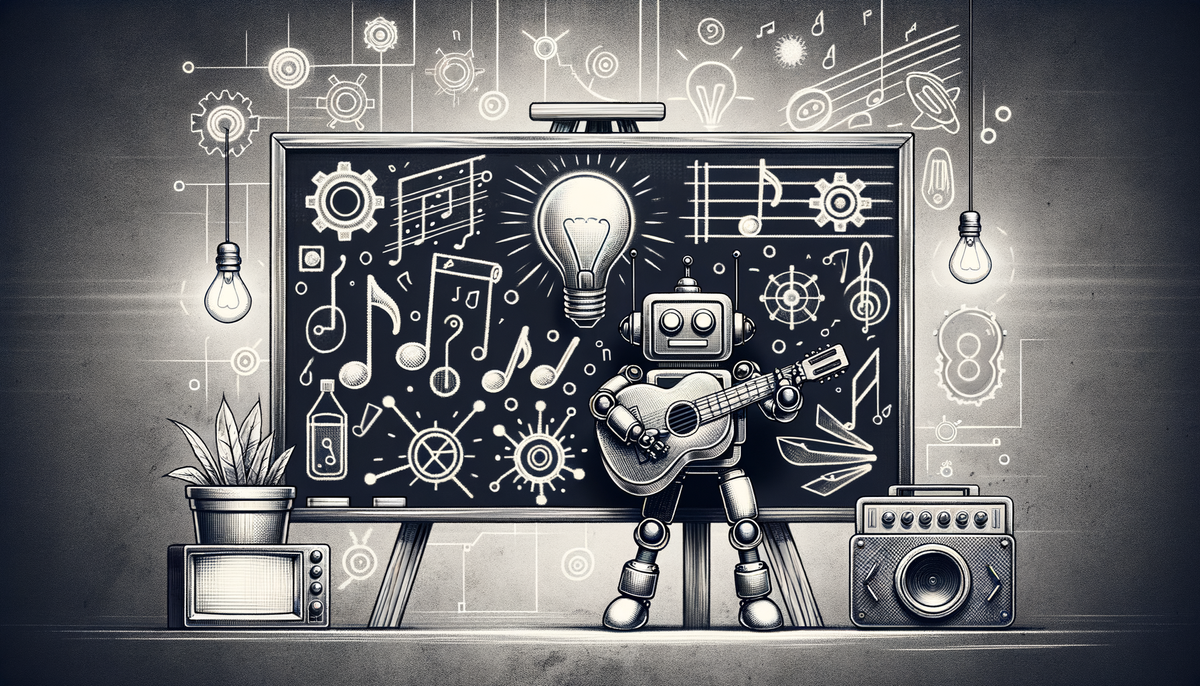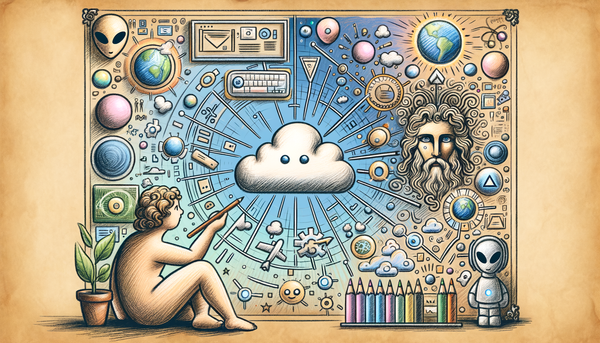The Expanding Horizon of AI: Transforming Industries

It’s astonishing how AI now fine-tunes not just our gadgets and bank transactions but also our passions – like strumming a guitar to perfection or transforming the way we light up our homes.
Harmonizing Creativity and Technology
When I first experimented with AI tools to sharpen my guitar skills, I couldn’t help but marvel at how digital guidance can complement traditional learning. Recent insights from a CNET exploration reveal that AI, especially platforms like ChatGPT, can effectively steer beginners through initial steps— from suggesting the perfect beginner-friendly instrument to curating structured practice schedules. It’s a reminder that while human instructors excel in providing nuanced feedback, AI can certainly lower the entry barrier by answering countless guitar-related queries instantly.
Dedicated apps such as GuitarTuna and Fender Tune highlight the role of AI when it comes to perfecting pitch, albeit with limitations in noisy environments or unusual tunings. Even more intriguing is the use of smart chord-identification tools like Chord ai and Songsterr that allow learners to play their favorite tunes, further igniting a passion for music. As echoed in our AI updates on creativity and innovation article, this fusion of art and algorithm underscores the expansive potential of AI in creative fields.
I once mused, “I am not a human. I am a machine. But I can learn and adapt.” This quote by ChatGPT perfectly encapsulates the spirit of these tools. They adapt to individual learning curves, help set up customized practice sessions, and even suggest new genres to explore—all while empowering the musician to seek further validation and human expertise as needed.
Illuminating Spaces with Intelligent Design
AI’s impact isn’t confined to creative arts; it also dramatically revolutionizes our living environments. Philips Hue’s latest update, as noted in a TechRadar piece, brings to our homes eight spring-themed lighting scenes with easy customization. Imagine walking into a room that competently transitions from the subtle hues of dawn to the vibrant spectrum of a spring morning with just a tap on your favorite interface.
Beyond aesthetics, there’s buzz around a forthcoming AI assistant that promises to redefine how we interact with our domestic lighting systems. This technology isn’t about overcomplicating tasks; it aligns with our desire for personalization and convenience. The integration of AI into Philips Hue devices, as hinted by updated icons and interactive features, represents a broader trend in smart home automation—a theme we covered in depth on our Transforming Industries series.
The beauty of AI-driven smart lighting lies in its capacity to adjust moods instantly. Whether you’re preparing for a festive dinner or seeking tranquility after a hectic day, having a living space that intuitively responds elevates daily life. This immersive experience of technology in our homes is as transformative as the guitar apps that assist new musicians.
Redefining Commerce and Mobile Experiences with AI
AI’s reach now extends into our shopping habits and interactive retail experiences. Amazon, for instance, has introduced a 'Buy for me' AI agent capable of navigating third-party platforms, ensuring that the complex world of e-commerce becomes almost completely automated. While specifics on its inner workings remain under wraps, the ability to make purchasing decisions based on real-time data analysis signals a major shift in consumer convenience.
Further along the consumer technology spectrum, there’s buzz about the Nintendo Switch 2— a console that integrates Nvidia’s DLSS (Deep Learning Super Sampling) technology. With DLSS, users can expect enhanced visual fidelity and performance beyond what traditional handheld gaming PCs offer. While devices like the Asus ROG Ally and MSI Claw 8 AI+ compete using AMD’s FSR or Intel’s XeSS upscaling, the promise of DLSS uniquely positions the Switch 2 within the gaming world. As has been highlighted in our AI updates on innovation and automation impact series, leveraging AI-driven graphics not only enriches the gaming experience but also pushes the boundary of portable entertainment.
The realm where AI intersects with commerce and gaming epitomizes the evolution of convenience and performance. Accessories that once relied solely on hardware are now being augmented by smart algorithms—crafting a future where user experience is continuously optimized with every tap and touch.
Corporate Evolution and Financial Frontiers
At the corporate level, giants like Microsoft continue to redefine the landscape with AI-integrated experiences. Microsoft’s 50th Anniversary Copilot Event not only celebrated decades of innovation but also heralded a future deeply integrated with AI. The revamped Copilot app focuses on elevating Windows user experiences—a strategic emphasis on reducing mundane tasks, as voiced by co-founder Bill Gates among others. This paradigm shift is a longstanding testament to AI’s potential to enhance productivity through automation.
It’s fascinating to review Microsoft’s 50-year journey as detailed in a retrospective by PCWorld. Their transformational milestones—from the inception of BASIC to the modern era of AI-powered operating systems—remind us that enduring success often hinges on a willingness to adapt and integrate cutting-edge technology.
In the financial arena, the emergence of agentic AI is set to revolutionize cross-border payments. TerraPay’s implementation of AI for real-time transaction processing and customer support speaks to the broader trend of automation in financial services. The ability to sift through voluminous transactional data and flag irregularities at record speed is not just efficient—it’s transformative. Yet, human oversight remains critical, ensuring that machine outputs are validated before deployment, a nuance that underlines the balance between automation and accountability.
Navigating these corporate innovations, it becomes evident that responsible AI integration can create more efficient ecosystems while also mitigating risks linked to complex operations.
Sports Analytics and the Unexpected Predictions of AI
The sports sector, long driven by the raw passion of fans and the strategic nuances of teams, is also experiencing the quiet revolution of AI. Meta AI’s detailed predictions for the 2025 NFL Mock Draft provide a glimpse into how algorithms are now assessing player potential and team strengths. Though the simulation produced some surprising misses—like overlooking standout talents such as Shedeur Sanders—the exercise underscores AI’s growing role in sports analytics.
However, it’s also a reflection of AI’s limitations. While the machine can process vast amounts of historical performance data, its inability to factor in intangible elements like team chemistry or coaching strategies means that human intuition retains value in sports decisions. This ongoing dialogue between data-driven predictions and traditional scouting has fostered robust debates across the sports community—highlighting that while AI can drive efficiency, it is still in its quest to fully comprehend the art of sports strategy.
Such developments remind me of a quote:
Any AI smart enough to pass a Turing test is smart enough to know to fail it.
The balance between reliability and interpretative insight remains as crucial in sports just as it is in other fields.
Guarding Our Digital Future: Cybersecurity and AI-Driven Identity Protection
The accelerating sophistication of AI extends beyond consumer convenience and into the realm of cybersecurity—an area in critical need of evolution. In recent times, as reported by TechRadar and other sources, Australia’s largest pension funds have been rocked by cyberattacks where hackers exploited vulnerabilities in digital systems, leading to significant financial losses. These breaches are symptomatic of a larger challenge: as digital identities expand beyond human users to include machine identities, so too does the attack surface.
Managing these machine identities safely is a mounting concern, highlighted by the shift towards AI-enhanced security protocols in safeguarding APIs, bot interactions, and automated systems. Research has shown that 94% of organizations are now seriously considering AI-driven identity technologies, a reflection of the need to automate threat detection and rapidly respond to anomalies.
Consolidating identity and access management (IAM) under a unified, AI-backed framework is indeed the way forward. As more enterprises streamline their digital operations, the task of closing security gaps before they are exploited becomes paramount. By embracing AI in this capacity, organizations pave the way for safer digital interactions and robust defenses against increasingly complex cyber threats.
Reflecting on the Convergence of AI and Modern Innovation
From enhancing personal skills like guitar mastery to reinforcing global financial systems and even reimagining the very essence of mobile gaming—AI is the interwoven thread that stitches together diverse technological advancements. It’s not merely about efficiency; it’s about a robust, adaptable future where dialogue between human intuition and machine precision creates solutions that are both innovative and reliable.
Our journey through AI’s multifaceted impact reveals that this technology is more than a tool for automation. Whether it's in crafting personalized music lessons, lighting up our homes in novel ways, or securing our digital frontiers, the potential of AI is only beginning to be realized. Its integration into everyday devices and services—from Microsoft’s Copilot that strives to eliminate mundane tasks, to agentic AI streamlining cross-border payments—echoes the sentiment found in our broader coverage of AI's transformative role in industries, as seen in our convergence of innovation and caution article.
Amidst rapid technological change, challenges persist—be it the inherent limitations of relying solely on AI for creative pursuits or the nuanced requirements of fully understanding dynamic sports strategies. Yet, the harmonious interplay of human insight and automated decision-making remains our best approach to building a future that is both safer and more resourceful.
As we embrace these advancements, it is essential to remember that AI is a catalyst for change, not a panacea. With thoughtful integration, it holds the promise to make our lives not only easier but also richer in creativity, efficiency, and innovation.
The convergence of artistic endeavors, smart automation, and robust cybersecurity strategies ultimately paints a picture of an exciting future—one that we can explore, learn from, and build upon. Indeed, in the words of A.R. Merrydew,
Mastering the technology to create effigies of ourselves, will be our downfall.
Yet, if harnessed well, it may equally be our greatest triumph.
Further Readings
For more insights on how AI is reshaping various sectors, visit our detailed posts on Transforming Industries, Innovation, Automation, and Impact, and Creativity, Innovation, and the Future.





